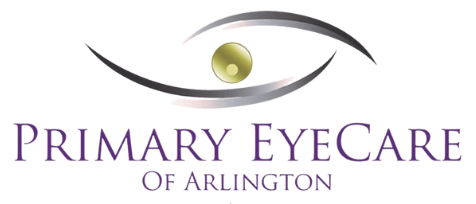Myopia Management
Dr. Artee Nanji and the team of eye care professionals at Primary Eye Care of Arlington and South Main have the experience and clinical knowledge required to diagnose and treat myopia.
What is Myopia?
Also known as nearsightedness, myopia is a common refractive error in which close-up objects look clear but distant objects are blurry. Myopia is caused by a cornea (front surface of the eye) that is too steeply curved, or by the front surface of the eye being too long. When this happens, light is focused in front of the retina instead of on it, and this causes distorted vision.
Myopia can be inherited, so if one or both parents have myopia, then their child may have it, too. Myopia is often diagnosed in children between the ages of 8 and 12. When this happens, myopia can be progressive, meaning it worsens, as the child ages and grows throughout the teenage years.
There are three types of myopia: low, moderate, and high.
Low myopia
Classified as “mild,” low myopia means the prescription for eyeglasses is -3.00D or less. People who have low myopia may be able to engage in close work and activities without the use of eyeglasses but will need them to drive or see objects in the distance.
Moderate myopia
Moderate myopia means the prescription for eyeglasses is anywhere between -3.25D to -6.00D.
High myopia
Classified as “severe” myopia, high myopia means the prescription for eyeglasses is over -6.00D. People who have moderate to high myopia will need to wear eyeglasses or contact lenses all the time, since they may only be able to see objects very close to their face.
If you don’t have myopia, it can be hard to imagine what the world looks like for people with myopia. To see what the world looks like for people with low, moderate, and high myopia, look at this myopia simulator.
Treating Progressive Myopia
Children are typically prescribed eyeglasses or contact lenses to correct their vision upon diagnosis of myopia.
While some cases of myopia stabilize by the time the child becomes an adult, most of the time myopia progressively worsens as the child ages because the eyeball shape continues to grow and impact the child’s sight. Children with progressive myopia will experience eye strain, blurred vision, headaches, and fatigue, particularly after looking at objects in the distance for extended periods.
People who have myopia are at a higher risk of developing serious eye conditions and diseases later in life, including a detached retina, glaucoma, cataracts, and macular degeneration. Due to the negative impact myopia has on eye health and quality of life, it’s important to get regular eye exams to screen for myopia.
At Primary Eye Care of Arlington and South Main, Dr. Artee Nanji will create a customized treatment plan for patients with progressive myopia. She may recommend the use of MiSight® 1-day soft contact lenses, FDA-approved to slow the progression of myopia in children ages 8–12.
Watch the video to learn more about myopia and MiSight® 1-day soft contact lenses.
Managing Myopia
The first step to managing myopia is to visit our Arlington or Memphis location for a comprehensive eye exam or pediatric eye exam.
Our optometrist will perform various tests to check your eyes or your child’s eyes, determine your overall eye health, and screen for myopia. If myopia is discovered, your doctor will guide you through the proper treatment plan for correcting the issue and preventing further progression.
Interested in learning more about myopia management? Schedule an eye exam at Primary Eye Care of Arlington and South Main and let us know you want to learn more about myopia management. Our expert doctor and team will help you find the right solution for your needs or your child’s needs and support you in your pursuit of optimal eye health.
